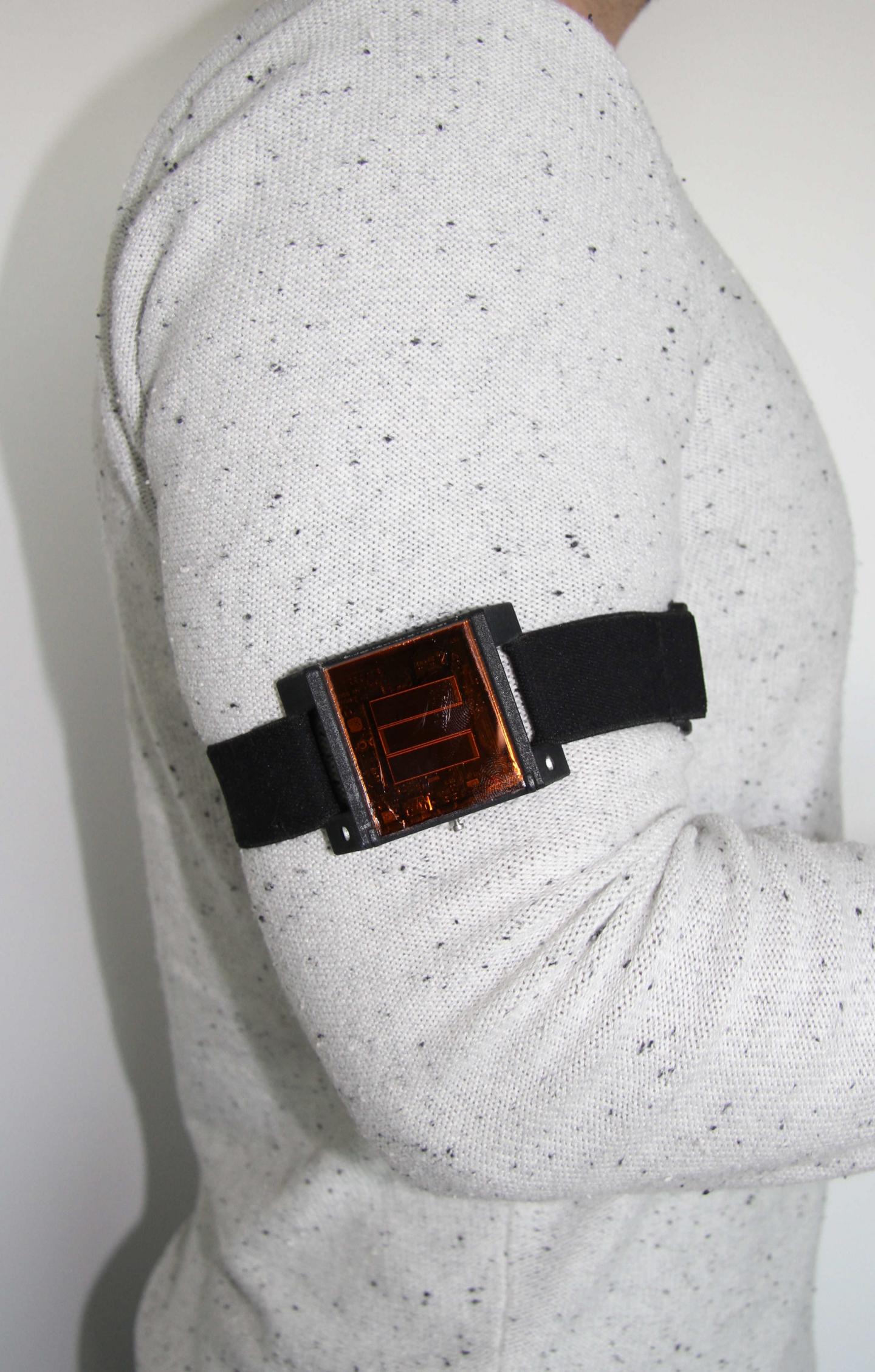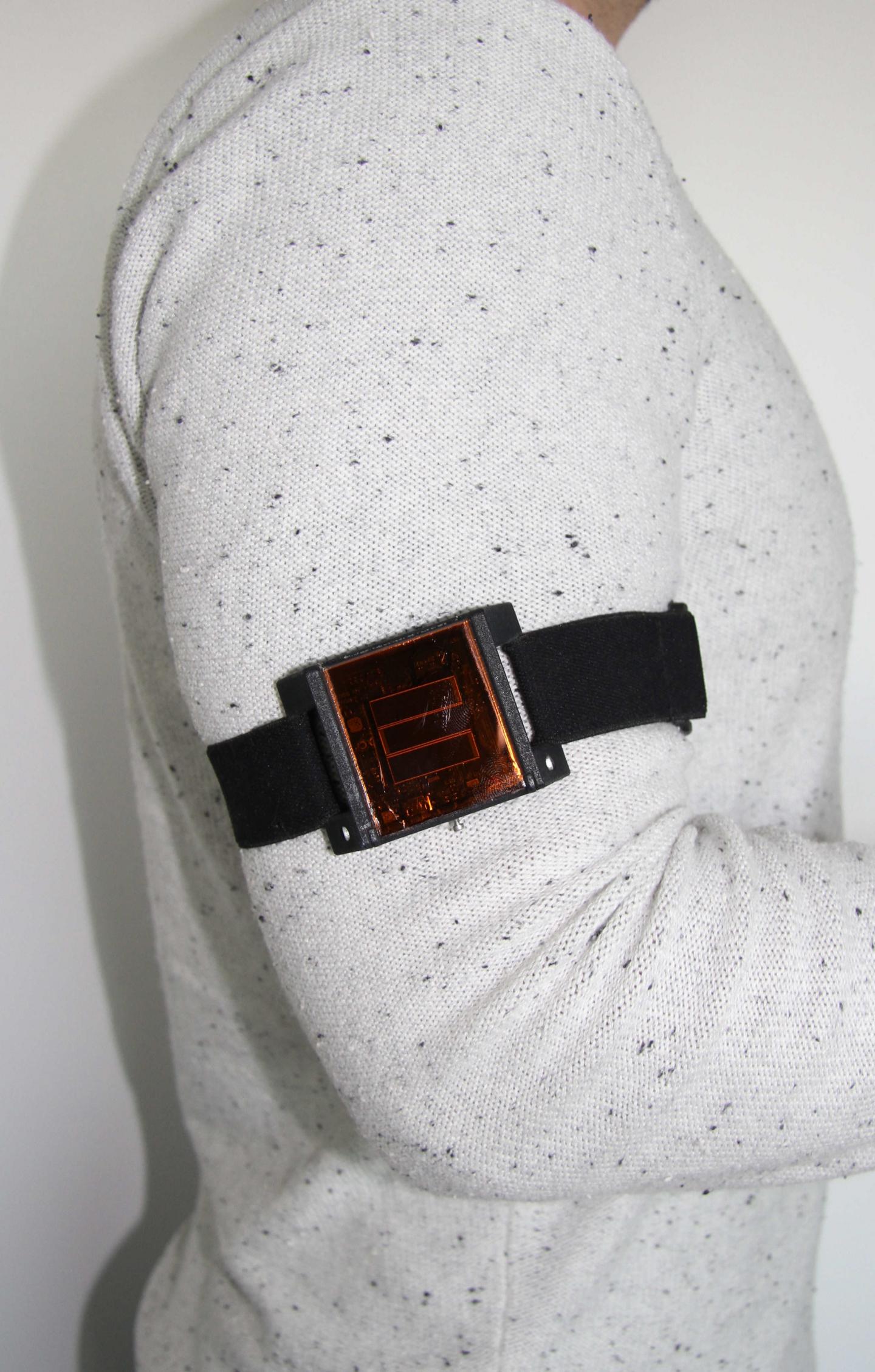
Credit: Lukas Bereuter
The notion of using solar cells placed under the skin to continuously recharge implanted electronic medical devices is a viable one. Swiss researchers have done the math, and found that a 3.6 square centimeter solar cell is all that is needed to generate enough power during winter and summer to power a typical pacemaker. The study is the first to provide real-life data about the potential of using solar cells to power devices such as pacemakers and deep brain stimulators. According to lead author Lukas Bereuter of Bern University Hospital and the University of Bern in Switzerland, wearing power-generating solar cells under the skin will one day save patients the discomfort of having to continuously undergo procedures to change the batteries of such life-saving devices. The findings are set out in Springer's journal Annals of Biomedical Engineering.
Most electronic implants are currently battery powered, and their size is governed by the battery volume required for an extended lifespan. When the power in such batteries runs out, these must either be recharged or changed. In most cases this means that patients have to undergo implant replacement procedures, which is not only costly and stressful but also holds the risk of medical complications. Having to use primary batteries also influences the size of a device.
Various research groups have recently put forward prototypes of small electronic solar cells that can be carried under the skin and can be used to recharge medical devices. The solar cells convert the light from the sun that penetrates the skin surface into energy.
To investigate the real-life feasibility of such rechargeable energy generators, Bereuter and his colleagues developed specially designed solar measurement devices that can measure the output power being generated. The cells were only 3.6 square centimeters in size, making them small enough to be implanted if needed. For the test, each of the ten devices was covered by optical filters to simulate how properties of the skin would influence how well the sun penetrates the skin. These were worn on the arm of 32 volunteers in Switzerland for one week during summer, autumn and winter.
No matter what season, the tiny cells were always found to generate much more than the 5 to 10 microwatts of power that a typical cardiac pacemaker uses. The participant with the lowest power output still obtained 12 microwatts on average.
"The overall mean power obtained is enough to completely power for example a pacemaker or at least extend the lifespan of any other active implant," notes Bereuter. "By using energy-harvesting devices such as solar cells to power an implant, device replacements may be avoided and the device size may be reduced dramatically."
Bereuter believes that the results of this study can be scaled up and applied to any other mobile, solar powered application on humans. Aspects such as the catchment area of a solar cell, its efficiency and the thickness of a patient's skin must be considered.
###
Reference: Bereuter, L., Haeberlin, A. et al. (2016). Energy harvesting by subcutaneous solar cells: A long-term study on achievable energy output, Annals of Biomedical Engineering. DOI 10.1007/s10439-016-1774-4
Media Contact
Joan Robinson
[email protected]
49-622-148-78130
@SpringerNature
http://www.springer.com
############
Story Source: Materials provided by Scienmag





